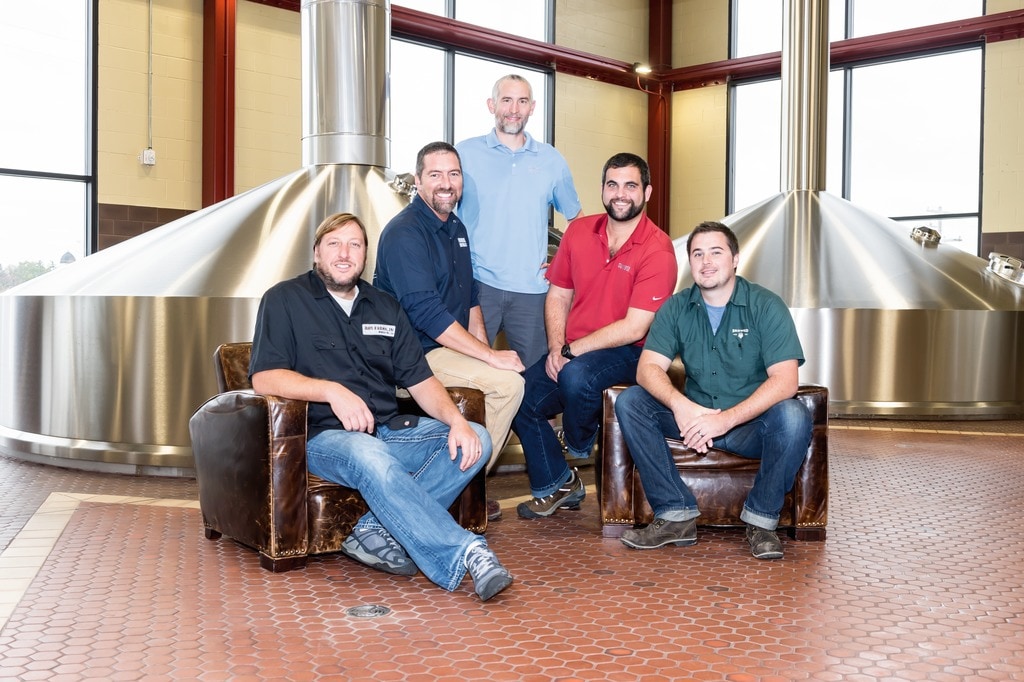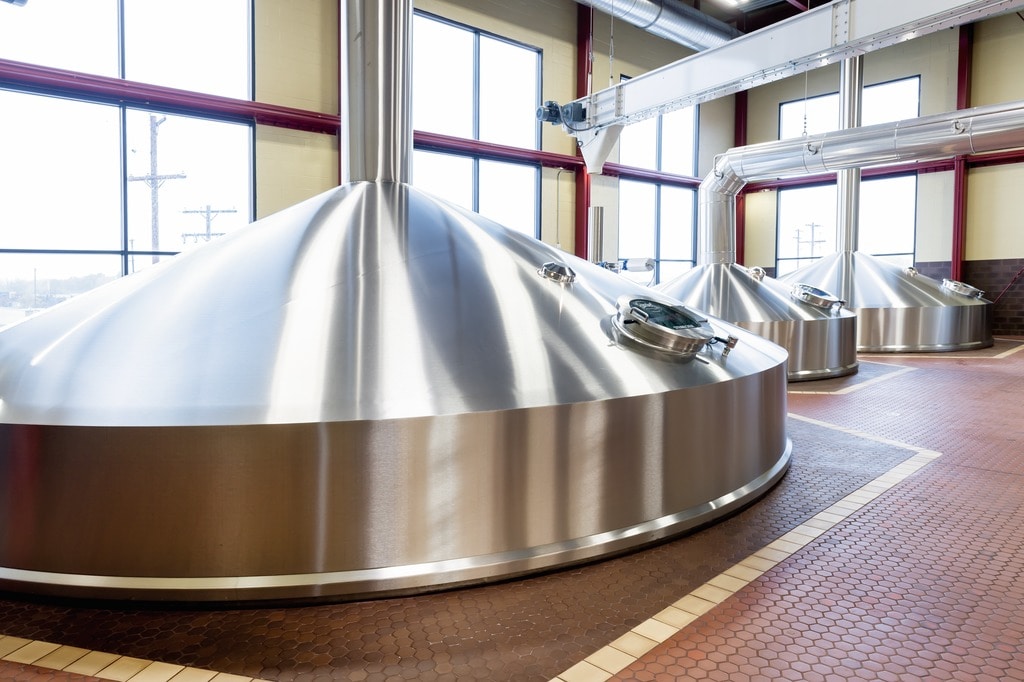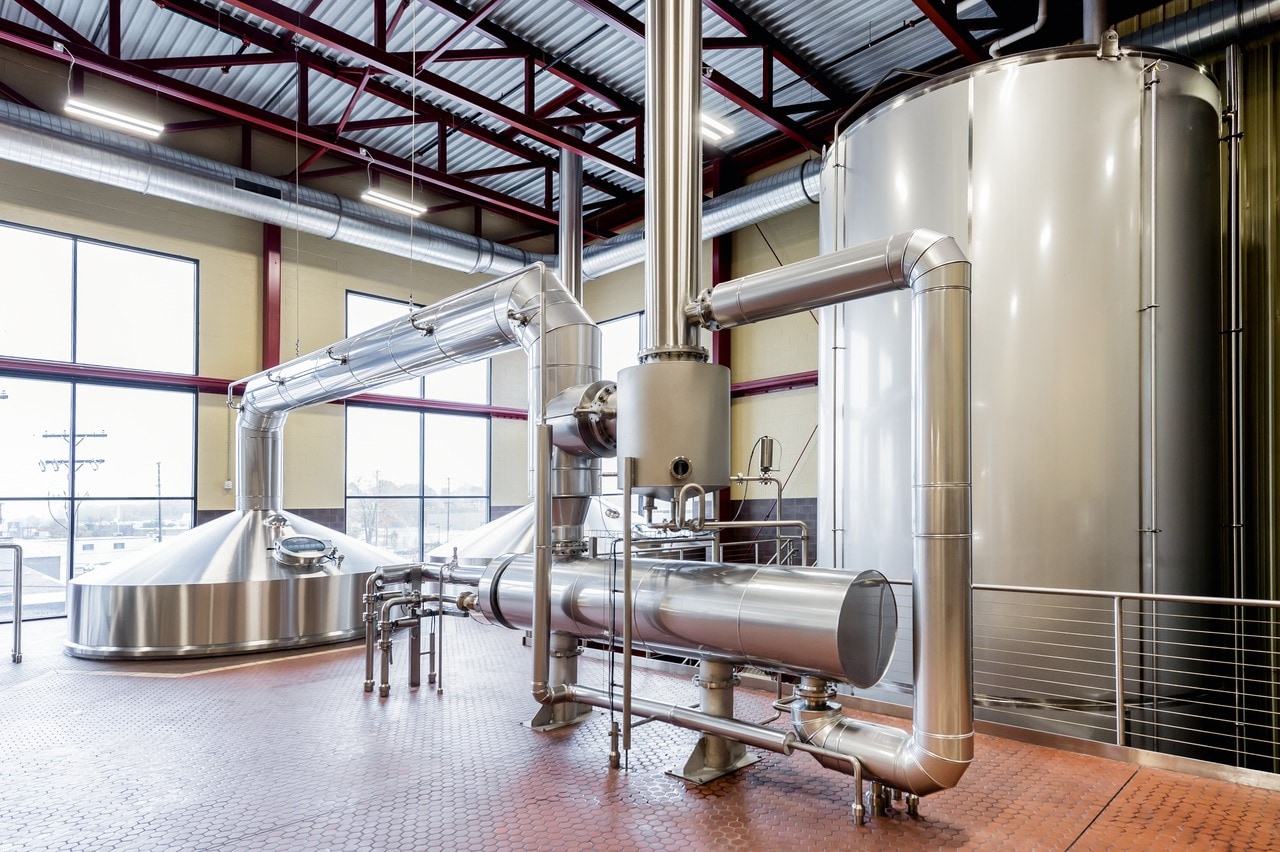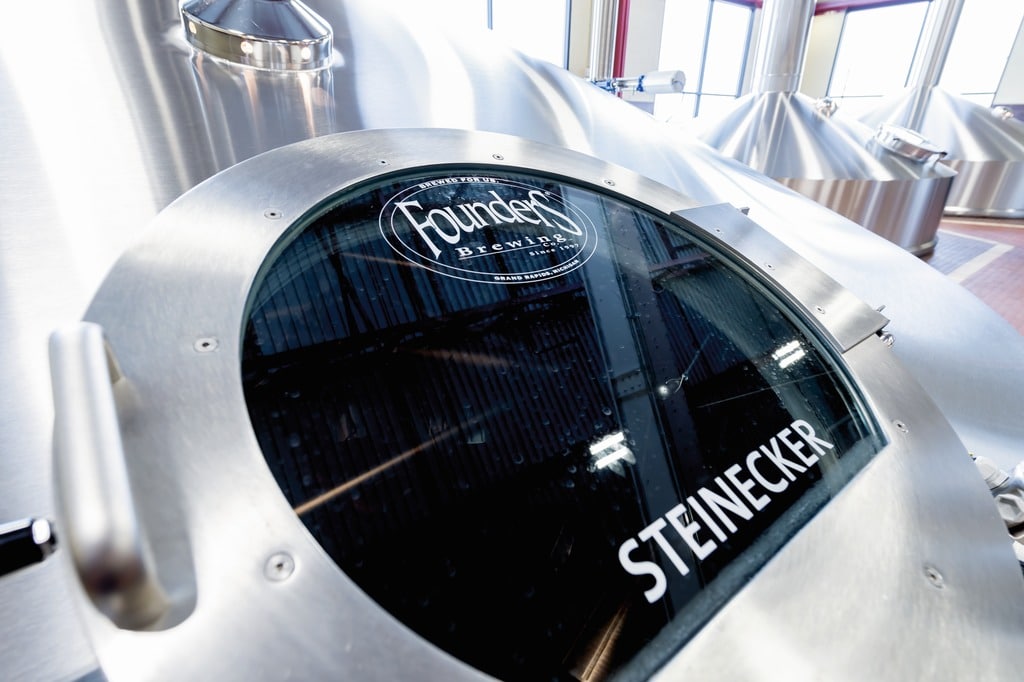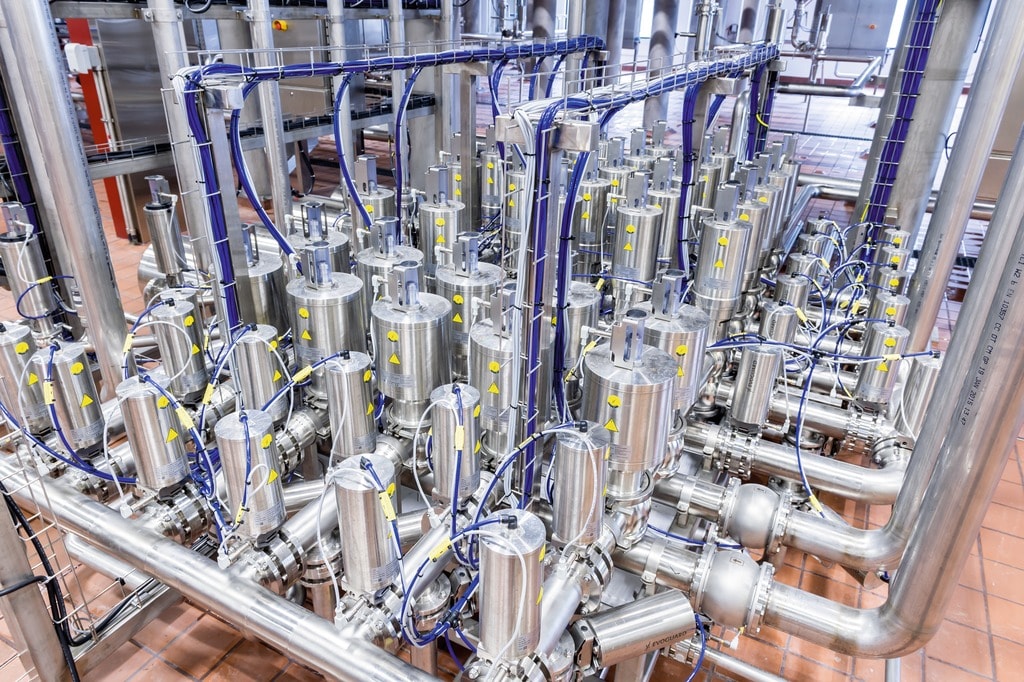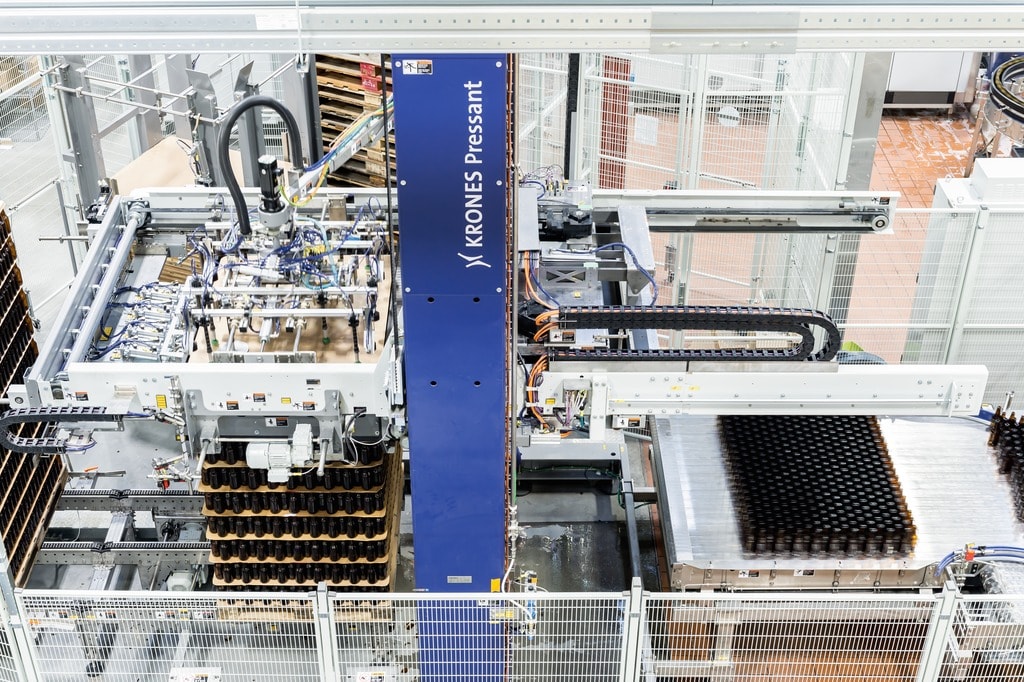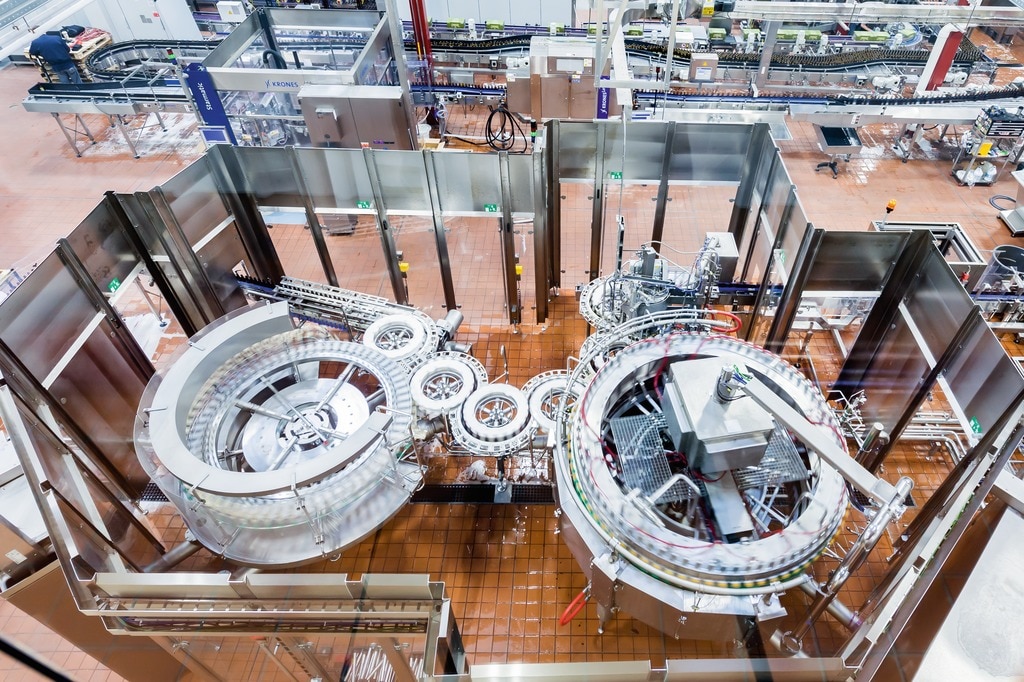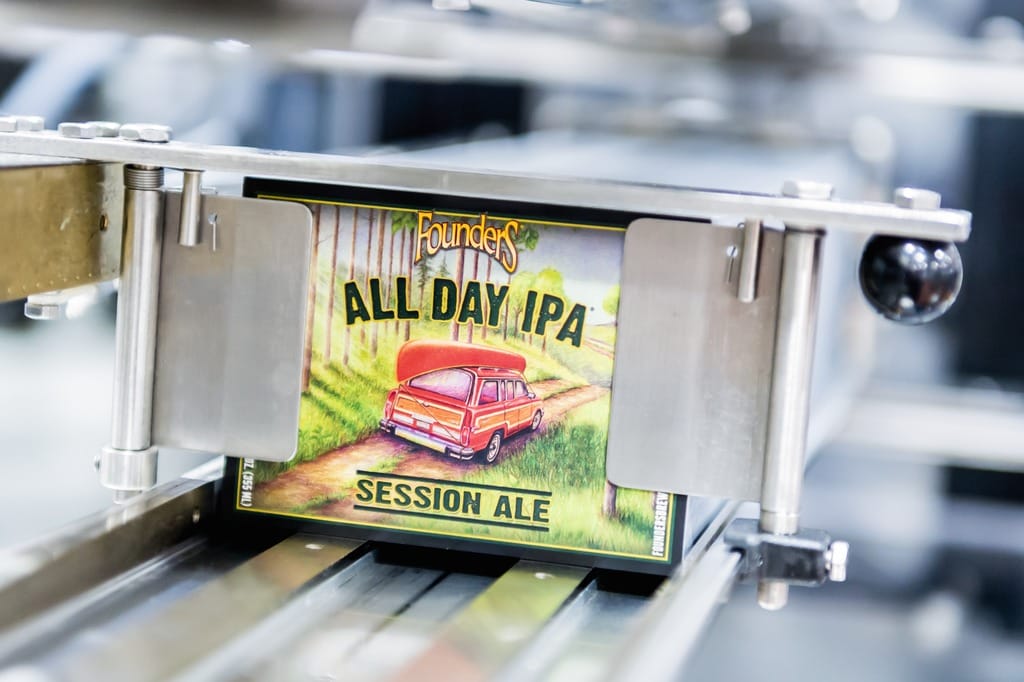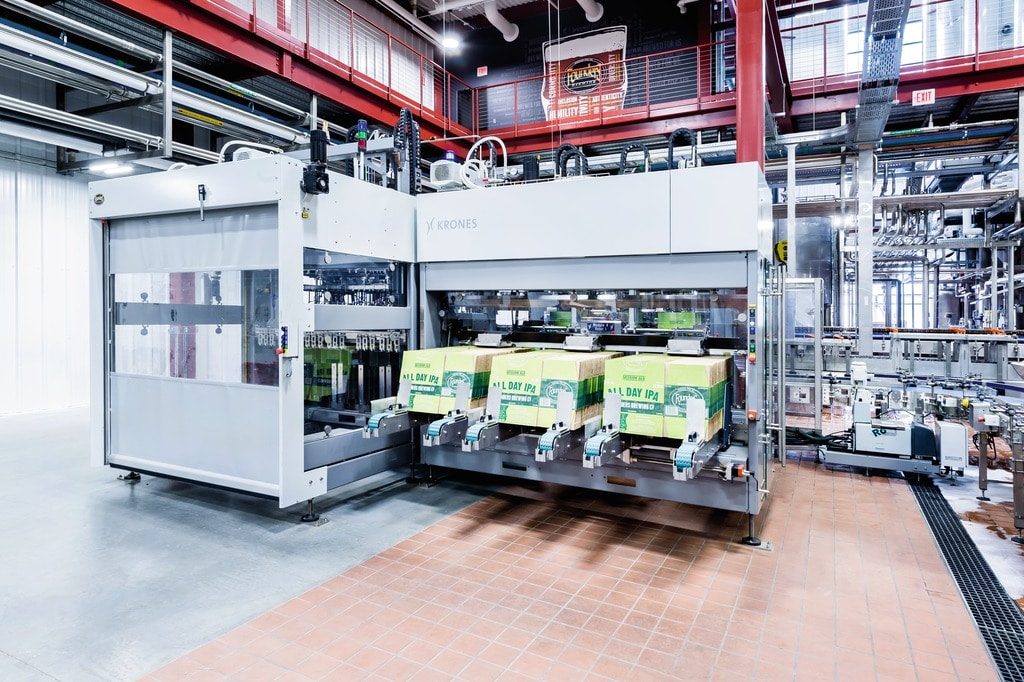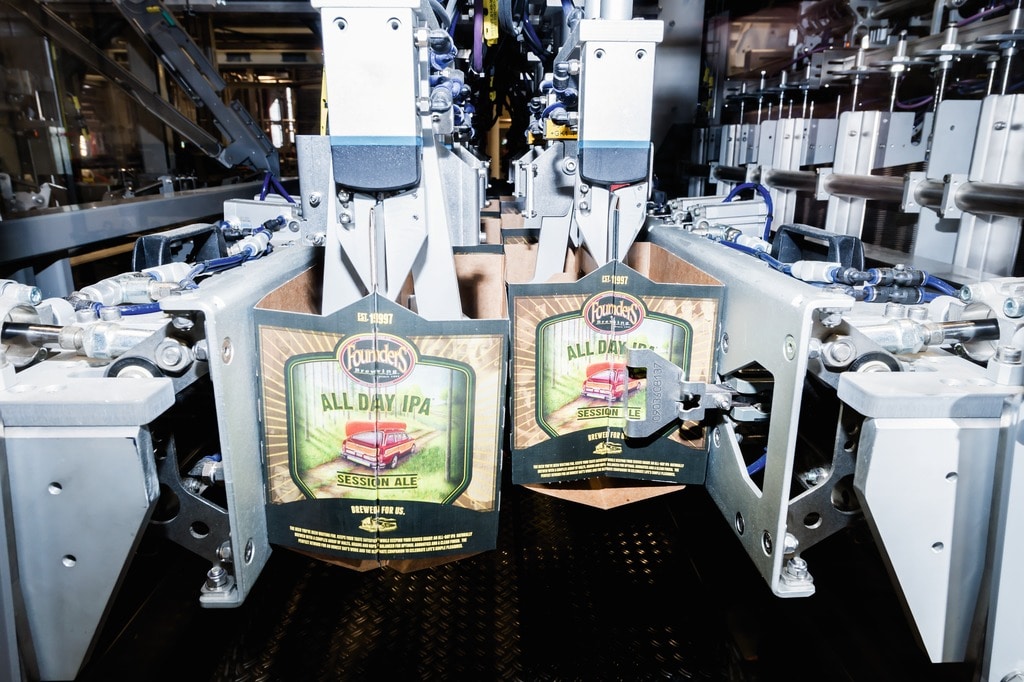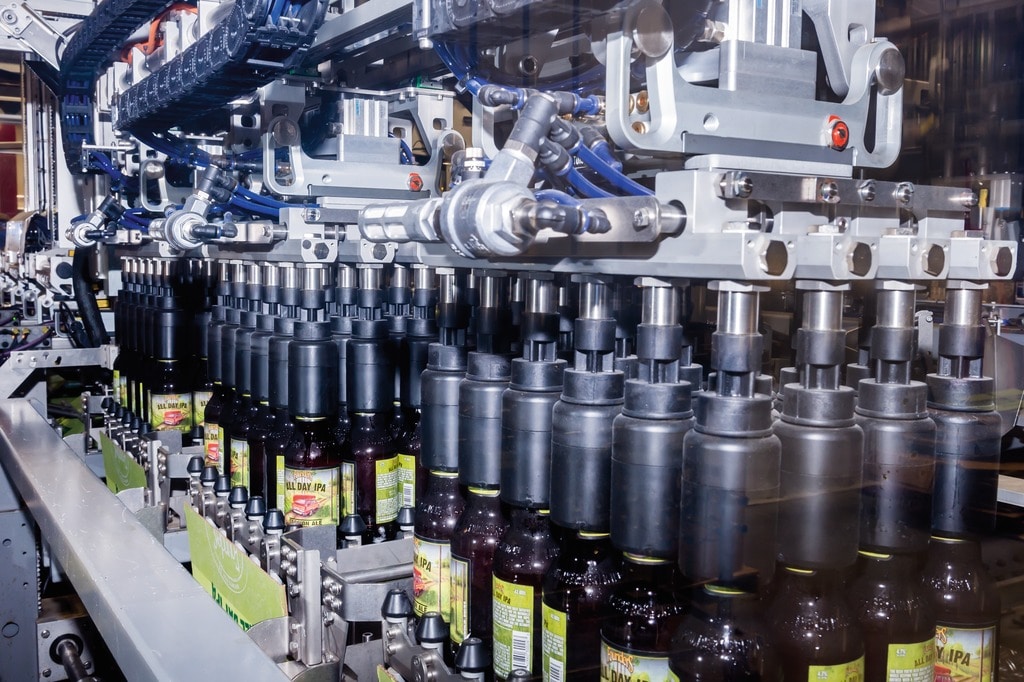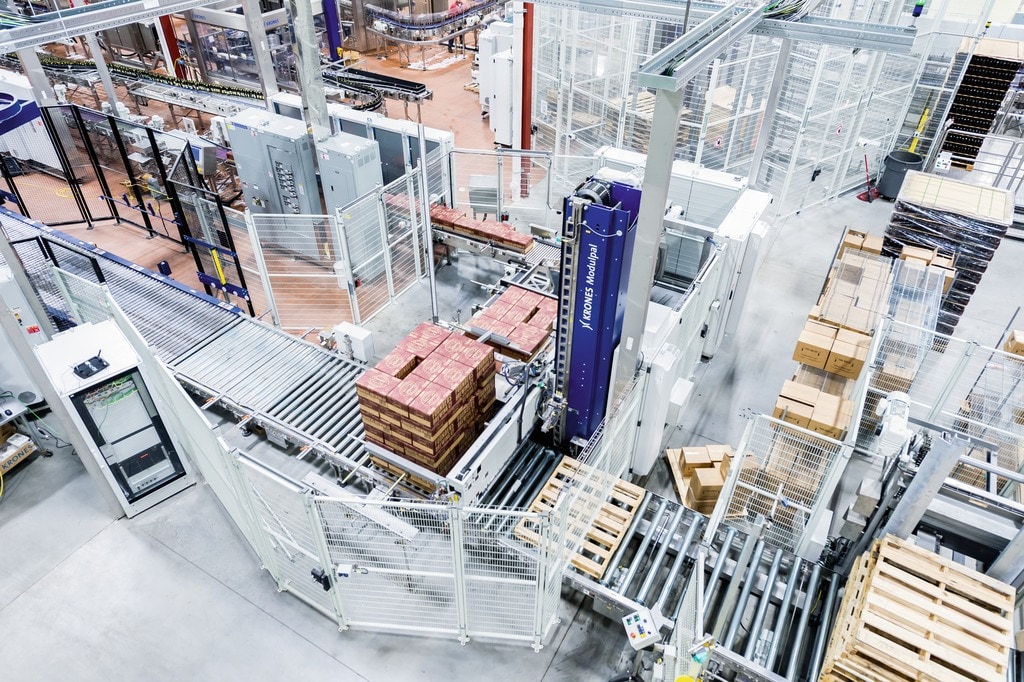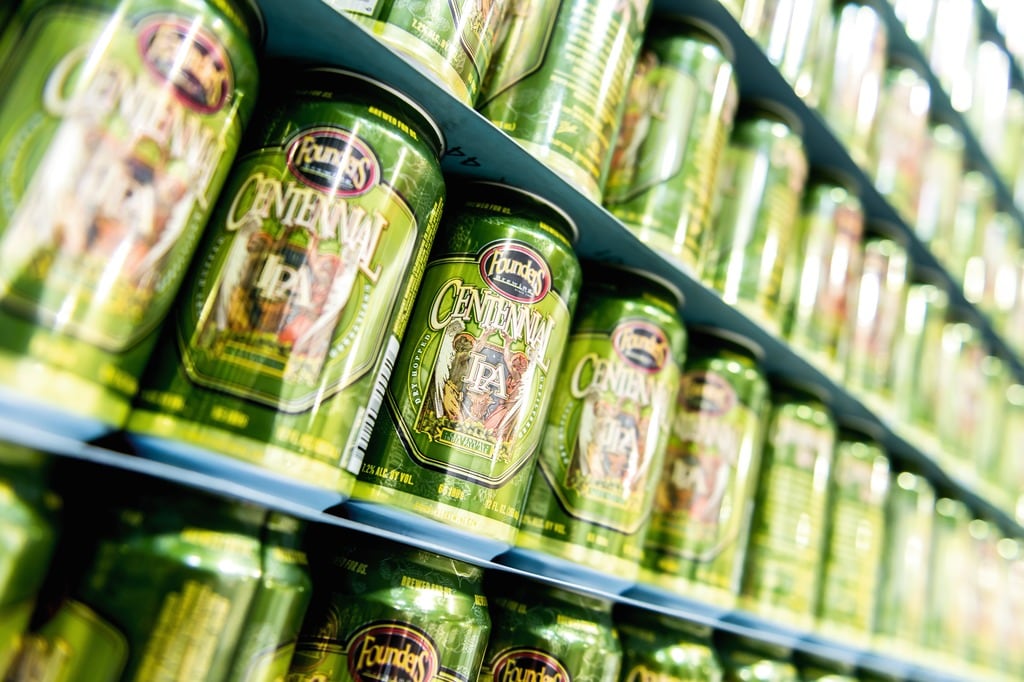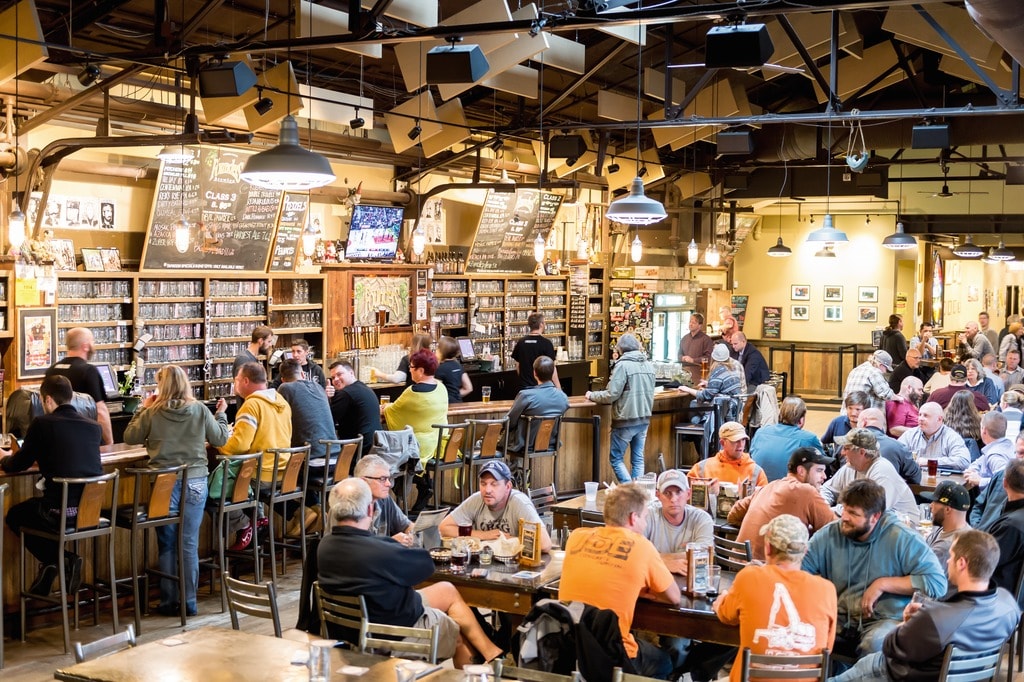“Brewed for us”: with this rededication to its own corporate values, Founders Brewing has soared into the Top 20 of the USA’s craft breweries – and (of course) with its beers as well, whose popularity seems boundless.
Now, at its facility in the city centre of Grand Rapids, Michigan, Founders has tripled its capacity to around one million hectolitres – and thus, as it were, built a second brewery into the existing one.
So the project entailed nothing less than installing a completely new brewery, with an output of 700,000 hectolitres at the existing inner-city location, and on a small hill into the bargain.
Now a conventional Steinecker brewhouse
Since experience with the existing CombiCube B brewhouse had been uniformly positive, Founders once again opted for a Steinecker brewhouse – this time, however, for a conventional one, rated at 350 hectolitres per brew. Like the CombiCube B, it consists of three vessels: mash-lauter tun, wort copper and whirlpool, plus a vapour condenser, and went into operation in 2015. “Our brewing process is very simple,” says Alec Mull, Vice President of Brewing Operations. “We run a single-temperature infusion process. Since we don’t need a separate mash tun for the protein rest, we didn’t install one; instead, we mash directly in the lauter tun. This means we don’t have to maintain and clean the mash tun. ‘Keep it simple and hygienically safe’ is our watchword, and he enthuses: “The new conventional brewhouse is wonderful, our staff just love it. It makes magnificent beers, it’s almost even easier to operate than the CombiCube, and it’s responsively matched to our actual needs.”
The mash-lauter tun, with a diameter of 7.5 metres, has been dimensioned about one metre larger than necessary. This has enabled the loading to be reduced, which in turn benefits the lautering time over the 57 sources. The brews are produced here in a four-hour rhythm. “This is significantly more relaxed than with the CombiCube, in which we always run two brews simultaneously,” says Alec Mull. Every year, Founders brews around 35 different beers, some of them just once a year. The CombiCube B continues to produce all of them. The new conventional brewhouse, by contrast, is reserved for the major products. “The CombiCube is a workhorse, fully automated, very flexible, extremely reliable, easy to transport in containers, quickly erected. I would simply just upsize the CombiCube again and again, but there are limits to its capacity, of course,” admits Alec Mull.
Vapour condenser reduces energy consumption
Nor, most emphatically, did Alec Mull wish any longer to do without a vapour condenser. The very first time it was used in the CombiCube B, gas consumption was reduced at a stroke by 40 per cent. Founders collects the hot water at around 65 degrees Celsius from the vapour condenser directly in a tank, and then utilises it firstly as mash liquor and secondly for hot-caustic cleaning of the tanks. “This way of cleaning the tanks is wonderfully effective, and is now, thanks to water recovery from the vapour condenser, also cost-efficient,” explains Alec Mull. “Krones did a really good job here.” As the energy carrier in the brewhouse, however, steam is still being used, not hot water.
“I was clear in my mind right from the start that I wanted to work with a Steinecker brewhouse again. With Krones, you get what you pay for. Even though Germans and Americans sometimes have differences of opinion, at the end of the day we always work very well together. The Germans are very meticulous about details, they know what they’re doing and they’re extremely well organised. The Krones lines also look very neat and tidy – I like that, because I just love hygienic breweries. And last but not least, we got a perfect brewhouse,” says Alec Mull.
Fully automated fermentation and storage cellar
In parallel to installing the new conventional brewhouse, Founders also upsized the capacities of the fermentation and storage cellar by 350,000 hectolitres. It was commissioned in July 2015. For this purpose, the brewery installed 15 cylindro-conical fermentation and storage tanks with a gross capacity of 1,750 hectolitres. In the cellar, too, a second phase of expansion will by the end of 2016 upsize the total capacity by the same volume again, to what will then be 1.05 million hectolitres. Whereas the original fermentation and storage cellar was still operated by hand, using hoses, when implementing the first and second stages of expansion Founders decided on a fully automated solution for the first time. Krones handled the entire piping, installed the valve blocks, featuring Evoguard double-seat valves, and uploaded the TwinPro cellarage software for automatic control of the operations involved.
He sees the advantages of full automation firstly in the significantly lower workload required for hosing, cleaning and disinfecting, “because everything happens at the touch of a button”, and secondly in the very important aspect of hygiene, “because everything is inherently hygienic”. For round-the-clock working in three shifts, twelve staff a day were required in the old, manually operated cellar, while in the new, fully automated cellar only four are needed.
New glass bottling line from Krones
Following the brewhouse, plus the fermentation and storage cellar, Founders also commissioned a Krones glass bottling line in the summer of 2015, so that in fact it’s legitimate to speak of building an entire new brewery. The installation work began in April; two months later production was up and running. At the end of August, the acceptance test was passed with 92 to 94 per cent efficiency for two different packages. The line has been dimensioned for a rating of 30,000 12-ounce bottles per hour (corresponds to around 0.35 litres). In the future, however, it will also be tasked a few times a year with filling 25.4-ounce bottles (0.75 litres), for beers that are sold in small batches of 6,000 to 12,000 cartons. “The line’s higher output alone means that the efficiency per man-hour is now 150 per cent higher than with the old line,” says Matt Sutton, Packaging Manager.
The line begins with a Pressant Universal 1N bulk-glass sweep-off depalletiser. A downstream mass conveyor enclosed in plexiglass then spaces the containers, and transports them to the rinser-filler block, comprising a Moduljet rinser and a Modulfill HRS filler. The fill level is then inspected in a Checkmat F-X. After passing through a buffer section, the containers are dried by a Linadry before being dressed on a Starmatic labeller featuring two cold-glue stations in shoulder and neck labels or back labels. A Checkmat E has also been integrated here, for inspecting the label placement and for ejecting any incorrectly labelled bottles.
“The Varioline is a brilliant concept”
What’s also totally new for Founders is the downstream technology of the Varioline packaging system, which on a footprint of just six times seven metres handles all the end-of-the-line packaging. The Varioline’s two modules first use robots to produce open carrier six-packs, insert the bottles in these, and then place four open carriers at a time in a full-size carton likewise erected by the Varioline, which is then sealed directly. The ready-for-dispatch packs are inkjet-date-coded, and their correct fill weight checked using inline scales. “The Varioline was the biggest innovation for us,” explains Matt Sutton. “Since it handles the jobs of five or six individual machines, the footprint has been downsized to at most ten per cent of a conventional system. To be honest, I was a bit worried at first that the machine, with its more than 60 servomotors, was too complicated. A tour of the test centre at Krones’ facility in Rosenheim then convinced us,” says Matt Sutton. “The Varioline is a magnificent concept, one that’s really paying off for us.”
Building a complete new brewery
| Brewhouse | Fermentation and storage cellar | Glass bottling line | Line conversion |
|---|---|---|---|
|
350 hectolitres per brew
|
Around 350,000 hectolitres
|
30,000 bottles per hour (12 ounces or 0.35 litres)
|
|
Wouldn't that be something for you too?
